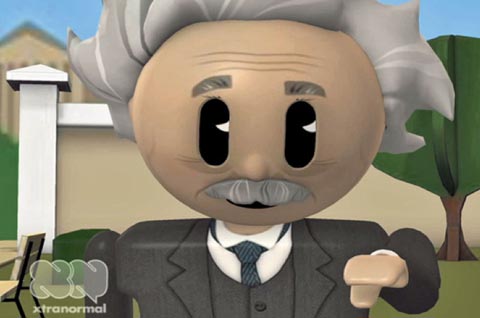“It’s not a gay lobster but still funny” — a response by “reddplague” to Harry Partridge’s anti-Go! Animate cartoon rant.
For the record, in spite of mixed feelings about automated animation software like Go! Animate, I am absolutely in favor of tools like this. As contemporary society extends itself beyond writing and still images, animation will continue its ascendancy as a vital communication form of the 21st century.
Nowadays, when a major event happens, more often than not I don’t read about it or see a photo, but rather I watch a video of the event on YouTube. We live in a video culture, and in tandem with these developments, younger generations are learning to express their opinions through the animation process. As the sophistication of easy-to-use animation tools increase, so will the ability of users to express themselves in unique ways.
To those who fear that these tools will replace the traditional role of animator, think about it this way. Today, a majority of the population knows how to write, but that hasn’t eliminated professional writers nor the specialized study of literature and writing. There is nothing wrong with a society in which writing is second nature to everybody, and it can be argued that a populace that knows how to write will be more receptive to quality writing by professional writers. That’s a good reason to look forward to a time in the future when everyone has a basic understanding of animation.
Cartoon Brew: Leading the Animation Conversation |
Permalink |
No comment |
Post tags: Go Animate, Harry Partridge

If you’re a regular reader of the Brew, then you might already be familiar with the companies discussed in today’s Wall Street Journal article about the rise of quickly-made, and in some cases do-it-yourself, digital animation. The companies were Xtranormal, Next Media Animation, and Go! Animate.
The article raises some questions worth pondering. For example:
1.) Xtranormal now charges users an average of $1 to make a cartoon and expects to begin turning a profit by the middle of this year. Could charging people to create short animated films be the future of making money from on-line animation instead of charging people to watch cartoons.
2.) How far are we from the day when artists and studios license their artwork to companies like Xtranormal giving fans an easy-to-use system for creating cartoons based on popular characters. Let’s say you could create your own cartoon using characters from Gnomeo and Juliet. It could happen, and I can’t think of a better way of allowing someone to interact with an animated character that they like.
3.) Multiple examples are provided in the article of development execs and producers who have contacted writers after seeing their work on Xtranormal. How long will it be before an animated series is sold in Hollywood based on the work of a writer discovered on Xtranormal?
4.) Richard Appel, one of the exec producers on The Cleveland Show, said of Xtranormal’s cartoons: “It’s a writer’s medium that’s cleverly found a way to get people to look at their screen and listen to what’s being said.” Is that really any different from shows like South Park or any of Seth MacFarlane’s series? In TV animation, the visual elements of animation have been de-emphasized to the point where they no longer matter (Chuck Jones’s infamous “illustrated radio”), and Xtranormal appears to be only the next step in that evolution. But will there ever be an easy-to-use animation tool that allows the masses to take advantage of animation’s visual possibilities?
Cartoon Brew: Leading the Animation Conversation |
Permalink |
No comment |
Post tags: Go Animate, Xtranormal



